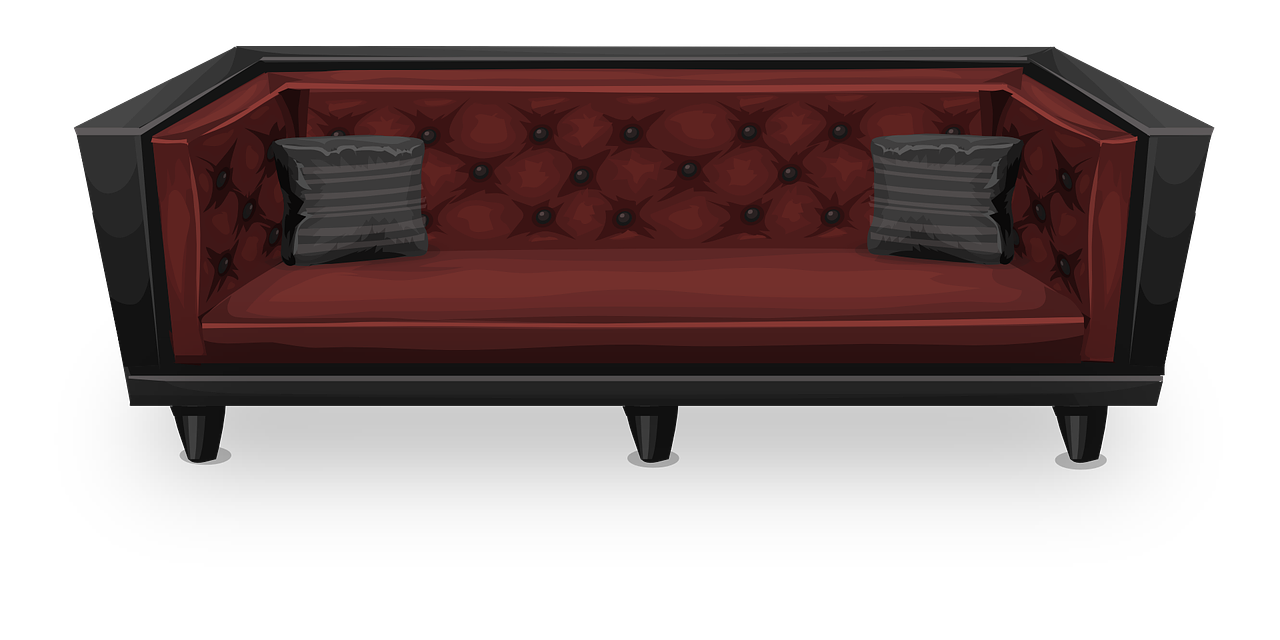It may be easy to think of microfiber as just another fabric, but it’s actually a complex blend of polyester and polyamide which has been processed to create small, tightly woven loops that give the fabric a soft, suede-like appearance. These properties make microfiber very suitable for upholstery fabrics, and when you add durability and stain resistance into the mix – well, you’ve got one impressive piece of furniture on your hands. Unfortunately, most people don’t treat their new microfiber loveseat with nearly enough respect.
It takes work to take good care of microfiber upholstery (although not nearly so much work as it would take to replace it!) So here are some tips to keep your microfiber loveseat looking great.

Water Spots and Water Marks
The first thing you’ll need to know is how to treat water spots, which are one of the most common problems for microfiber upholstery. When a glass is set on your loveseat’s armrest or back cushion, it may leave behind a small wet spot (or larger puddle) if it remains there long enough. Fortunately, these are very easy to remove with a little club soda – simply dab the spot with a paper towel or clean rag moistened with some of the fizzy drink, and rub in slow circles until the moisture is gone. Then dry it quickly with another clean paper towel or cotton cloth so that mildew doesn’t form while the fabric is still damp.
You can also use fizzy drinks to remove stains from your loveseat, but be aware that some liquids may leave behind discoloration. Even water can do this, so you’ll want to make sure it’s completely dry before placing any objects on its surface.
Cleaning and Maintenance Tips
Now that we’ve got the basics out of the way, let’s take a look at some other things you need to know about taking care of microfiber furniture. First and foremost is dirt: in order for any stain removal technique to work well, you’ll first need to remove as much dust and grime as possible with a vacuum or cleaning sponge. And although this fabric doesn’t attract l like some types of upholstery, it still needs to be vacuumed regularly (at least once a week) and spot cleaned often.
Harsh Chemicals
Microfiber is one of the most resistant upholstery fabrics we know of. However, this also means that it’s tough on dirt and stains – but gentle on your skin. That means you’ll want to avoid any upholstery cleaners that contain bleach or dye as these can damage your loveseat fabric over time. If you’re not sure about a particular product then look for something that’s been specially formulated for microfiber furniture; otherwise, just stick with soap and water (hot if possible.)
In addition, never use any wax-based polishes or sprays since these can leave behind a sticky residue that will attract even more dirt over time. If protection is important to you, then use a spray-on protector such as Scotchgard™ – but again, test it first on an inconspicuous spot of your loveseat before applying it everywhere.
Airing Out Your Loveseat
Finally, the best way to keep dust from building up in your microfiber loveseat is to give it plenty of ventilation by pulling out its center cushion and putting it back when you’re not sitting on it. This works wonders for refreshing upholstery that’s become musty or stale smelling!
And remember: never use any sharp objects such as knives or scissors without protecting the surface first padding or other soft materials. If you’re not sure whether a certain item will harm your loveseat, then err on the side of caution and find something else to use.
Microfiber can be expensive upholstery fabric, so nothing should stand in the way (literally) of keeping yours clean and beautiful for many years to come!
Cleaning Microfiber Loveseats: Fabric Sofa Cleaners
Pretreat any stains immediately. Your loveseat is likely to come with a care tag that includes information on appropriate cleaners, but you can also research microfiber upholstery cleaners online if need be. Don’t use ammonia- or bleach-based cleaners, and don’t rub too hard when cleaning – these things can damage the material.
When your loveseat gets dirty, spot cleans it as much as possible before laundering the whole thing. If you’re using a conventional washer and dryer, make sure to use only cold water so that fading becomes an issue. Always use a low tumble setting or air dry – high heat can damage the fabric’s fibers.
Removing your loveseat slipcover for washing is a good idea if you’re going to be cleaning it frequently (you should only have to do this every few months, depending on how often you use the furniture) but if that’s too much trouble then at least make sure to cover any bare cushions with protective pads. Protection from pets and young children is also important, as microfiber upholstery isn’t nearly as durable as some other types of fabrics.
Microfiber Loveseats: Helpful Hints for Retiring Furniture Pieces
No matter how careful you are with your loveseat, it’ll start to show signs of wear eventually and need to be retired. When that time comes, talk to a furniture refinisher about having the microfiber cover stripped off and replaced with a new one if need be. It’s an expensive process, but well worth it for how good your loveseat will look after you’re done!
